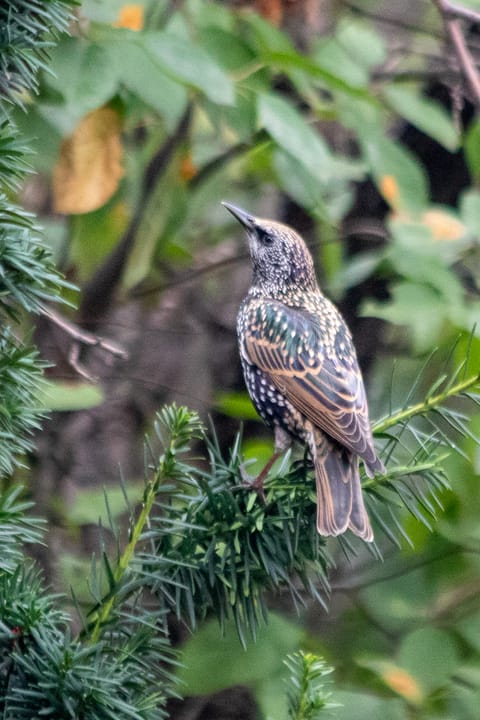The Birds of Sara D
New York, NY, USA
“You see those holes?” said Ranger Jill, gesturing to an almost invisible series of holes perforating the bark of a tree. “Yellow-bellied sapsucker. Oh, and there it is, higher up the tree.” The bird was nearly invisible among the foliage, but she knew what to look for and where to look.
Living in Manhattan, it’s easy to get the impression that the city’s everyday bird life consists of an unending diet of house sparrows, pigeons, and starlings. Not by chance, those three species are all invasives that have significantly displaced native birds. For two out of the three, we even have the same person to thank, bird fan and literature buff Eugene Schieffelin. Mr. Schieffelin found native American birds insufficiently Shakespearean for his tastes and set about trying to remedy the situation, with catastrophic results. Thanks, Eugene.
The tedium is slightly relieved by the presence of mourning doves, who can be found noisily courting each other on air conditioners all over New York City at certain times of year, and hawks such as red-tailed hawks, who are apparently taking advantage of New York’s pigeon bonanza by switching from an all-rodent diet to columbophagy. But you could be forgiven for thinking that the exceptions are just an anomaly.
Not so, said Ranger Jill. It turns out that while pigeons, sparrows and starlings are often the most visible of the city’s birds, there’s quite a lot more going on if you know where to look for it. Such as the sapsuckers, who were out in force, industriously mining the trees for bugs and sap. Even the sparrows turned out not to be an undifferentiated mass: alongside the house sparrows you’ll find at least two native species, the song sparrow and the white-throated sparrow.
As we slowly made our way up Sara Delano Roosevelt Park under the guidance of the Parks Service rangers leading our walk, something else became clear. The volume and variety of bird life is very strongly correlated to plant diversity. Most of the trees in the park turn out to be London plane trees, beloved of city planners for their hardiness, resistance to pollution, and suitability for forming attractive avenues with their overarching branches that grow high on the trunk. They do, it is true, have a slight tendency to drop occasional limbs on passers-by, but in New York, as elsewhere, planners have chosen to overlook this little foible as a minor issue that in no way detracts from their other advantages.
They did not seem well loved by the birds, though. The sapsuckers seemed mostly to shun them in favor of other species. It was noticeable that wherever there was a little more variety, there were also a lot more birds.
Nowhere was this more obvious than in M'finda Kalunga Garden, a community garden nestled in the heart of the park. Stepping into the garden was like entering a different world. In place of cracked cement and disciplined rows of London planes, you suddenly found yourself in a modest (but carefully-tended) jungle, with an exuberant riot of different types of vegetation great and small. One tall tree had been entirely engulfed by a climbing vine that clearly offered a multitude of hiding places for the shyer species. The quantity of bird life in this one spot was easily five or ten times greater than we’d seen anywhere else in the park. A group of starlings, reprehensibly beautiful in their glossy plumage, tormented a lone robin. Whole flocks of tiny, fearless sparrows hopped through the bushes. Sapsuckers chased each other from tree to tree. And more besides: something that might have been a flycatcher darted overhead, and what might have been a warbler sang high up in the canopy. Ranger Jill said they’d seen cardinals and finches there on other days. When the environment is right, the birds are there.
Manhattan has changed immeasurably since the days when it was the favored hunting ground of the Lenape. But it doesn’t need to be a wildlife desert. Maybe all it would take is more space given over to greenery – not the sterile and orderly monocultures favored by urban planners, but the sometimes chaotic diversity of community gardens like M'finda Kalunga. We should give it a try.
